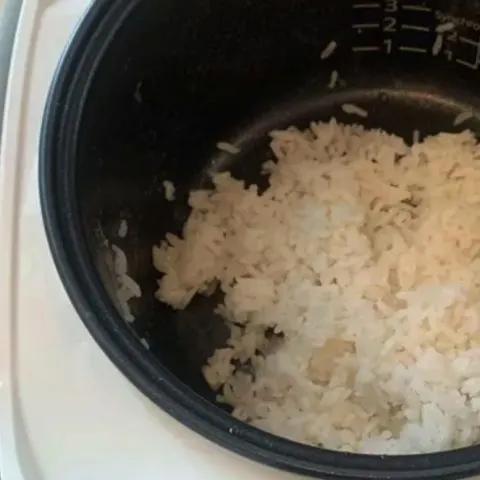Does your rice bubble like soap every time you use your rice cooker? This can very well dissuade you from preparing the rice or using your rice cooker. Fortunately, the solution is much easier than you think.
Why is my rice cooker boiling over?
Keep reading to learn how to stop your rice cooker from bubbling over.
Overfilling the rice cooker
Despite how well you wash and rinse the rice grains, you cannot eliminate all the starch. Whatever starch remains shall mix with the boiling water and form bubbles. It is nearly impossible to avoid it completely. However, you can prevent it from spilling over and making a mess by using the recommended quantity of rice to water.
Starchy bubbles will erupt from the rice cooker and spill out only when the cooker has enough liquid to allow them to reach the surface. With no other place to go, they will leak out.
Using starchy rice
When there’s excess starch on the rice that’s being cooked in a rice cooker, the boiling water mixes with the starch and starts to create large, soapy, foamy bubbles. These bubbles make their way to the surface of the rice cooker and cause it to boil over.
As the starch and water continue to mix, not only can the rice cooker boil over, but the rice can also be turned into something like a gross “soupy” porridge.
Using too much water
One of the most likely reasons that your rice cooker is boiling over is that there is too much water for the amount of rice being cooked. Rice cookers may also boil over if there is too much water in the basin of the cooker. An excess of water plus starch in rice is a bad combination.
How do I keep my rice cooker from boiling over?
Follow these steps to keep rice from boiling over;
Adjust the Amount of Water in Your Rice Cooker
Your rice cooker should have recipes in the manual that recommend the amount of water for each “cup” of rice you put in the cooker.
Note: the cup that comes with rice cookers is usually not an actual cup’s so use the same cup used to measure water to measure the rice.
Follow the directions that come with your rice cooker exactly and seeing if that fixes your boil over woes. If it doesn’t solve the problem, you should try adjusting the amount of water.
To figure out how much water you need;
- Reduce the amount of water by half a cup or a whole cup at a time. You do need enough water that rice cooks properly, so don’t reduce too much.
- Reduce the amount of water so that the water just covers the rice. This is the absolute smallest amount of water you want to put in the rice cooker. It may not properly cook all types of rice.
- Reduce the amount of water so that when you rest your finger on the top of the rice, the water reaches your first knuckle. The method is known the world over but is not effective if you have long fingers.
Rinse your rice before cooking
Rinsing rice also removes starch from the rice, which is the reason you get those nasty looking bubbles pouring out of the vent in your rice cooker.
To rinse your rice thoroughly, you can either;
- Run water over the rice: Pour the amount of rice you want to cook into a fine-mesh strainer and allow water to run over it until the water runs clear. You will remove more starch if you swirl your hand around in the rice so that the grains rub against each other.
- Put the rice in a bowl of water: Place the rice in a bowl and fill the bowl with water. Swirl the rice around with your hand. Drain and repeat until the water is clear.
Note: The second method wastes less water and does a more effective job of removing starch.
Add Oil or Butter to the Rice
Adding oil or butter to rice helps keep the grains of rice from sticking together. It also weighs down some of that frothy bubbling action that can happen even with the best-rinsed rice.
You can use the following oils or butter;
- Coconut oil will give the rice a hint of coconut flavor that pairs nicely with many Asian-inspired dishes.
- Olive oil is not only a healthy option, but it has a more neutral flavor compared to some of the other options.
- Butter is a great option. You can also substitute ghee for butter.
- Another great option would be sesame oil. But sesame oil is best added to the rice towards the end of the cooking process as it tends to burn easily.
Check this too: How to Use a Microwave Rice Cooker
Use a Different Kind of Rice
Different types of rice have different amounts of starch. Brown rice, for example, tends to be starchier than white rice. It will need to be washed more thoroughly. Sticky rice and short-grain rice also tend to have a lot more starch.
Types of rice that are low in starch such as:
- Long grain white rice
- Basmati
- Jasmine
What to do when rice cooker boils over
If your rice cooker is overflowing, do the following;
- Place a paper towel over the hole in the rice cooker’s lid or place the rice cooker on a cookie sheet to catch rice water if the rice cooker is leaking.
- Reduce the amount of water.
- Remove the lid and place a wooden spoon over the rice cooker to prevent a spill-over.
- Turn the rice cooker off and switch to keep warm setting if the rice is cooked and drain the excess water.

